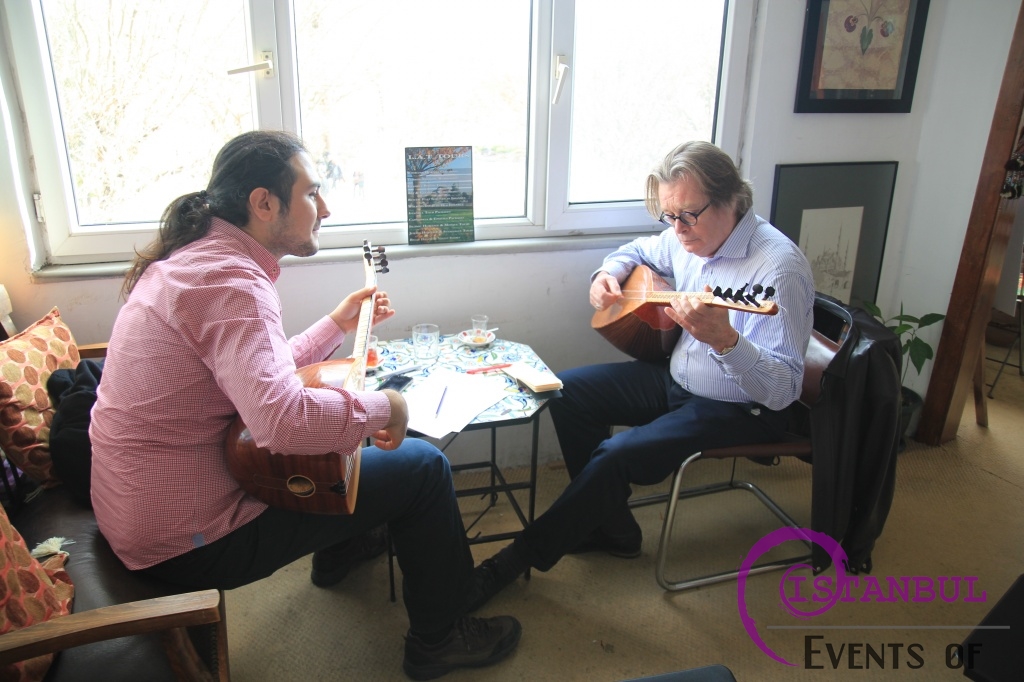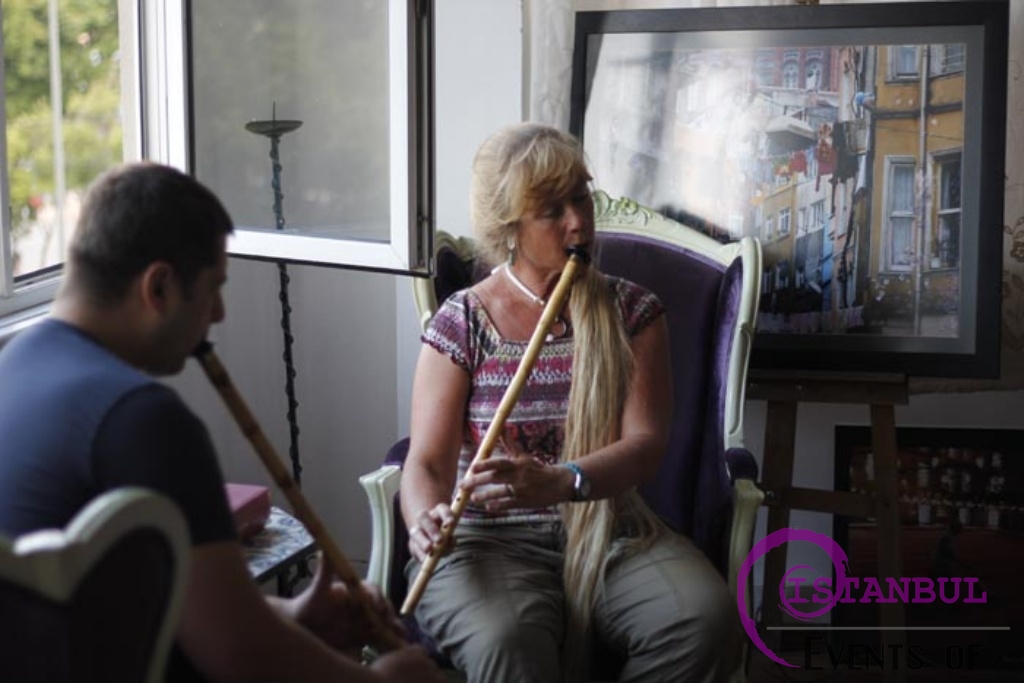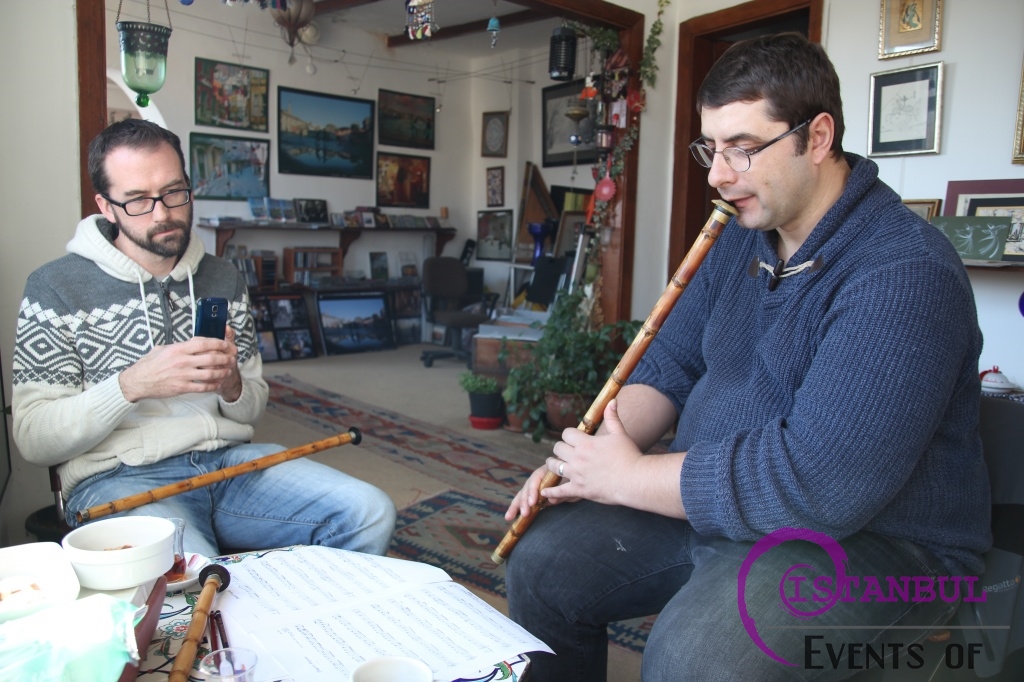Turkish Music and Instruments Lesson Istanbul
75,00 USD
Private Classes Available All Year Long
appointment
Description
Turkish Music and Instruments Lesson Istanbul
- Duration: 1.5 hours
- Location: Sultanahmet / ISTANBUL
- Lesson Teachings: available in English, French, Russian, Turkish
Overview ;
Turkish Musical Instrument Workshops in Istanbul
We as a Les Arts Turc Team offers you a change to learn the basic & advanced levels of Traditional Turkish Music with different Instruments. We have professional teachers and will be happy to teach you the techniques and imporving yourself during your visit in istanbul. They also can help you finding the right instrument for you.
For the music lovers, we can offer teaching lessons for the following Turkish Instruments ;
- Ney Lesson
- Ud – Oud Lesson
- Kanun, Lesson
- Saz Lesson
- Tambur Lesson
- Darbuka Lesson
- Bendir – Turkish Drums and Rhythms Lesson
- Classical Turkish Kemence Lesson
- Rebab Lesson
- Turkish Classical, Sufi and Folk Music System Lesson
What is Included ;
- In our lessons; we can teach beginner & advanced level Professional Artists
- If you don’t have an instrument, we can borrow you an instrument.
- Music scores and print documents.
- Workshop Area.
- Turkish Tea & Water.
Meeting Point ;
The lessons are given private or group upon request our teachers in our art galley and work shop area located in Sultanahmet. Here is our Art Studio Address ;
Google Maps : https://goo.gl/maps/uXuyRmELZsx
Events of Istanbul – Les Arts Turcs Art Studio
Alemdar Mh. Incili Cavus St.
No: 19 Floor : 3 (Behind The Underground Cistern)
Sultanahmet 34110
Istanbul, Turkey
Contact : Mr. Alp or Mr. Nurdogan ( Phone : +90 544 220 10 22 )
E-mail : info@eventsofistanbul.com
Cancellation Policy ;
Here in this link you can find the details about our cancellation policy.
Additional Information ;
Turkish Classical Music
Ottoman court music has a large and varied system of modes or scales known as makams, and other rules of composition. A number of notation systems were used for transcribing classical music, the most dominant being the Hamparsum notation in use until the gradual introduction of western notation. Turkish classical music is taught in conservatories and social clubs, the most respected of which is Istanbul’s Üsküdar Musiki Cemiyeti.
A specific sequence of classical Turkish musical forms become a fasıl, a suite an instrumental prelude (pesrev), an instrumental postlude (saz semaisi), and in between, the main section of vocal compositions which begins with and is punctuated instrumental improvisations taksim.[4] A full fasıl concert would include four different instrumental forms and three vocal forms, including a light classical song, şarkı. A strictly classical fasıl remains is the same makam throughout, from the introductory taksim and usually ending in a dance tune or oyun havası. However shorter şarkı compositions, precursors to modern day songs, are a part of this tradition, many of them extremely old, dating back to the 14th century; many are newer, with late 19th century songwriter Haci Arif Bey being especially popular.
Turkish Sufi Music
Followers of the Mevlevi Order or whirling dervishes are a religious sufi sect unique to Turkey but well-known outside of its boundaries.
Dervishes of the Mevlevi sect simply dance a sema turning continuously to music that consists of long, complex compositions called ayin. These pieces are both preceded and followed songs using lyrics the founder and poet Mevlana Jelaleddin Rumi.
TURKISH MUSICAL INSTRUMENTS
The musical instruments used Turks are of three main groups: stringed, wind and percussion instruments. Turkish musical instruments were produced the master-apprentice method in the Ottoman period. Traditional Turkish music is monophonic. Even though many instruments are used, they all play the same melody. The music reflects different emotions, mainly unrequited love and when it is sad it may sound depressing, but when expressing joy, happiness or pleasure you will find yourself dancing to the rhythm. The main instruments used in Turkish music show a great diversity. In classical Turkish music the zither, tambur, lute, tef (tambourine), darbuka and ney (reed flute) are some of the instruments used, besides the well-known ones also used in the west, including the piano, violin, viola and clarinet.
Music Lessons By Les Arts Turcs
The zither is called ‘kanun’ in Turkish. It is a stringed instrument played on the lap and the strings are stretched across the upper surface of a wooden box. Skilled craftsmen may use seven kinds of wood in making one zither. The upper surface is made of sycamore wood, the lower surface of pinewood, the bridge is of maple. The design on the sides and the upper surface is cut out of rose wood and white pine. The soundboard is completed using calf leather giving the zither its rich resonance. The tuning pegs and the peg locks are made of hardwood, either rose or ebony. The small tuning levers or tuning keys, are called ‘mandal’. It is played with the help of a plectrum, one fastened to each index finger an adjustable metal ring.
It would not be wrong to say that if a single instrument were to represent Turkish folk music it would have to be the baglama. The baglama was developed from another instrument called the kopuz, which is also used today. There are different kinds of baglama, like the çögür, cura, divan, tambura and kopuz. The kopuz, also a stringed instrument, was used in Central Asia Turkish tribes about two thousand years ago and is mentioned in the tales of Dede Korkut (a sage, the mentor of the Turkish Oguz tribe who narrates moralistic epic tales to a chieftain of the tribes). We come across the belief among the shamanist Turks that a warrior with a kopuz at his waist was protected in battle from injury at enemy hands. Turkish strolling minstrels brought the baglama to Anatolia and in fact, everyone knew how to play this instrument. The baglama is so-to-say a friend of the minstrels who at certain times of the year gather at contests and song festivals. Accompanied music, repartee between the contestants is sometimes satirical, sometimes filled with irony but never insulting and is fun to listen to.
Then we have the lute which is a little different to those seen in Europe. The lute is called ‘ud’ in Turkish. Lutes, also stringed instruments, have a sound box terminating in a neck which serves both as a handle and a device for extending the strings beyond the sound box. The masters of the lute were revered those interested in music. Today there are various trends in Turkish pop music and the lute is one of the main instruments accompanying the soloist both in classical Turkish music, popular mainstream music and folk songs. In Turkey there are singers who use the lute, just as their counterparts in the West use the guitar.
There are also reed instruments pipes equipped with a double reed or with a single reed. To name a few, we can give the examples of the zurna, ney, and shepherd’s pipe. Among them the ney is mostly used in mystic and religious music. Drums and the zurna go together and are mostly used in folk music and they are an indispensable part of wedding or circumcision festivities.
In Turkish music rhythm is of utmost importance. Therefore percussion instruments used for this purpose apart from drums, include ‘kudüm’ (small double drums used in mystic religious music) and the darbuka. Percussion instruments were first brought to Europe after being seen in the Mehterband of the Turkish army around the sixteenth century. At first only a king or high nobleman was allowed to have one. For many years drums were “aristocratic” instruments, primarily used with trumpets to sound fanfares as the king entered a theatre or throne room. The def (tambourine), is also a popular instrument used for rhythms. It is like a handheld frame that usually has rattles attached to the side. It is both struck and shaken and sometimes used young ladies dancing to a melody, in addition to its place in the orchestra.
Reference: Hale Akal/Newspot/BYEGM
Review of a Friend in 2004
The last august 2004 I stayed in Istanbul, during a holiday trip. There I met Mr. Nurdogan, who kindly explained and showed me what he works on in his establishment “Les Arts Turcs”. While he was showing us his web page, I saw on it that he offered music lessons, and I asked him if I could recieve a ney lesson and.
I had already for the next day, an appointment to have a lesson with Hüseyin Ozkiliç, a distinguished teacher of this instrument in Istanbul! Mr. Nurdogan let us a room in his local. I was a little bit nervous. I couldn’t imagine how would be a lesson of a so exotic -for me-, difficult and mystical instrument like the ney, but the calmness and the experience of Hüseyin, made me live the lesson with serenity, attention and a great curiosity. We did a little bit of teory (the names of the different neys depending on their size and tune, the name of the different notes, a brushstroke of history.) for all that I had to write notes, and then we alterned also with the practice (posture, hand position, how to blow, the fingering.) and I made it sound differents notes!! It was two nice hours of learning and meeting, where Hüseyin was opened to answer all my questions, and to give all the explanations that were necessary. but also, making me realize and experience the perseverance and concentration that are necessary to play this great simple instrument.
Carles Bartolomé
TURKISH MUSICAL INSTRUMENTS
Ethnomusicologist Etem Ruhi Üngör, whose research in this field is known worldwide, has travelled thousands of miles over the years, from city to city and village to village in search of traditional Turkish musical instruments. Every inch of his tiny flat is filled with books and his collection of 700 musical instruments, including many whose appearance and even names are unfamiliar. As well as obscure folk instruments, his remarkable collection includes a tanbur (classical long necked lute) made in 1887 Uzunyan belonging to Tanburi Cemil Bey, a lavta (lute) made Kosti Ventura in 1840 which belonged to Sultan Abdülaziz, girifts (reed instruments with eight holes) which belonged to the girift player Asim Bey and the famous ney players Tevfik and Sevki Sevgin, two 18th century dulcimers, rebabs (spike fiddles made of coconut shells), and kemençes (Black Sea fiddles). An unusual metal ney (classical Turkish reed flute) is one of the most interesting pieces in the collection. It was made Neyzen Tevfik when he was staying at a psychiatric hospital undergoing treatment for alcoholism. The other patients kept breaking his wooden neys, and in desperation he removed a length of metal piping from his bed and fashioned a sturdier instrument for himself.
The kosney, of which there are several examples in Üngör’s collection, is a wind instrument made of an eagles wing bone. Another unusual instrument to be seen is a long-necked stringed instrument called a cura.There are bells from almost every part of Turkey, and a nefir dating from 1859 made from the horn of a wild goat and used to call worshippers to the ceremonies of the Bektasi dervishes. A rectangular drum of a kind no longer made today comes from the Mediterranean town of Silifke, and there is even a conch shell of the type known as a triton, which sailors used to communicate at sea. These shells were also blown circumcisers to announce that the operation was over.The many wind instruments in ÿngör’s collection include the zurna (Turkish oboe), the longest type of which is made in western Turkey, and which becomes shorter as it crosses the country eastwards. ÿngör explains that this reflects variations in musical tastes from region to region, the people of western Turkey finding the sound of the small zurna too piercing, and those of the east the sound of the long zurna too deep. ÿngör explains that no country in the world has such a great range of musical instruments, including 25 types of zurna alone. He regrets the passing of local tradition in our modern world.
Reference: Skylife
KANUN LESSONS IN ISTANBUL
The kanun has undergone various changes since its invention. The strings used to be made of gut, but since the early 20th century nylon strings, which give a more powerful sound and are easily available in various gauges, have superseded these. The pegs used today are another recent modification that did not exist in the original instrument. Before these were introduced the musician obtained the notes he desired pressing on the strings with the nail of his left thumb, making it a far more difficult instrument to play. Haci Arif Bey was the greatest virtuoso of the kanun in this original form in the 19th century. The next kanun virtuoso was the 20th century musician Ferid Alnar, who won a reputation as a very young man with his unusual style of playing, and was regarded as a master before he had reached the age of 20. In 1946 Alnar composed his Concerto for String Instruments and Kanun. Other celebrated kanun players were ‘Blind’ Nazim Bey, Vecihe Daryal and Ahmet Yatman.
The kanun player sits with his instrument on his knees, and with picks made of tortoiseshell attached to rings on the forefinger of each hand. With the left hand he adjusts the pegs to the correct pitch for the piece as the makam changes, while playing the melody with his right. Like the piano, each string produces the single note to which it is tuned. The instrument is played with all the fingers, using a technique comparable to that of the harp and guitar. It is the instrument best adapted to polyphonic music, and might be called the piano of Turkish music. It is equally at home as an accompanying or solo instrument. When played in an orchestra or ensemble it sweeps up all the other instruments and leads them on. The kanun is an instrument of special importance, since it can play both jazz and chamber music, and also has the advantage of being a solo instrument, which can play symphonic works.
Reference: Tahir Aydogdu, Umut Gokalp/Skylife






